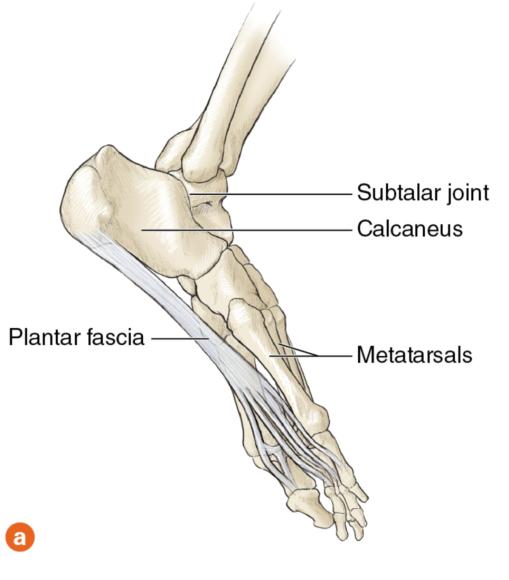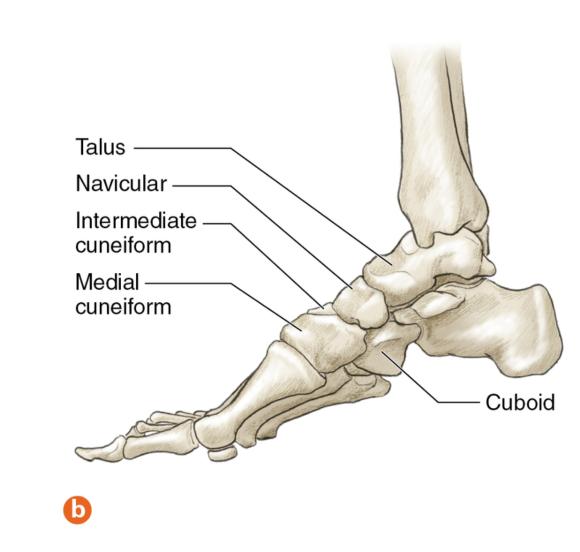What is plantar fasciitis?
This is an excerpt from Running Anatomy 2nd Edition by Joe Puleo,Patrick Milroy.
Plantar fasciitis can be such a painful condition that it often prevents any running at all. This sheet of fibrous tissue runs between the metatarsal heads and its insertion in the calcaneus (next to the Achilles tendon; figure 9.4). Its weakest part is found at the heel, where it becomes injured. The typical sufferer winces when the underside of the heel is even lightly touched. If the exercises presented in this chapter are ineffective, then a physician's steroid injection can produce a cure. A better long-term solution, however, is to seek knowledge of why the injury occurred and address that cause.
 |
 |
Figure 9.4 Foot: (a) underside showing plantar fascia; (b) medial side.
Why does plantar fasciitis occur? Like many running injuries, it happens due to some very specific reasons and some very general ones. Not every runner suffers plantar fasciitis for the same reason, but they all suffer. For instance, some runners wear stability shoes with a low arch when they have a high-arched foot. The discrepancy between arch height and arch support allows the plantar fascia to collapse or stretch into the empty space, which can result in micro tears in the fascia or pull the fascia away from its insertion into the bottom of the calcaneus. In another example, runners with chronically tight calf muscles may develop plantar fasciitis because the tight calf muscles tighten the Achilles tendon to which they are attached, which in turn causes the ankle to lose its ability to dorsiflex. This lack of dorsiflexion can cause the plantar fascia to tighten and become inflamed.
In short, the potential causes of plantar fasciitis are practically limitless. In contrast, the treatment options are rather limited - and not always effective. Cortisone shots may work, but where exactly should the shot be administered, given that the fascia extends for the length of the foot and into the heel? Another treatment method involves night splinting to stretch the calf muscles; however, because the calf muscles and the Achilles tendon don't connect directly to the plantar fascia in adults, this approach does not provide a guaranteed fix. Adding an arch support may also makes sense, but is the added arch support shaped correctly, and does it change the foot's natural biomechanics?
Most likely, the wisest way to address plantar fasciitis is to stretch and strengthen the entire foot, the ankle, and the calf complex. Ideally, rolling the foot over a hard rubber ball, a golf ball, or another round surface with sufficient density would possibly eliminate some fascial adhesions and serve as a good way to start rehabbing the injury. Also, some of the exercises included in chapter 4 (such as the heel raises and the dorsiflexion with ankle weights) can help stretch and strengthen the plantar fascia and, one hopes, enable pain-free running.
Learn more about Running Anatomy, Second Edition.
More Excerpts From Running Anatomy 2nd EditionSHOP

Get the latest insights with regular newsletters, plus periodic product information and special insider offers.
JOIN NOW
Latest Posts
- Sample mental health lesson plan of a skills-based approach
- Sample assessment worksheet for the skill of accessing valid and reliable resources
- Help your students overcome what holds them back from making health-promoting choices
- Example of an off-season microcycle
- Modifying lifts
- Screening for multilevel programs in a team environment


